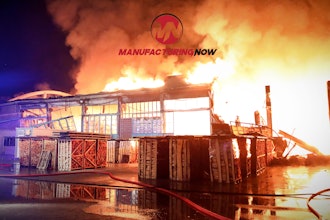The Ocean Guardian, a supply vessel, was conducting a sea trial near Seattle on May 27, 2022, when a diesel generator engine suffered a mechanical failure. A fire broke out in the engine room and caused some $1.1 million in damages, and the entire incident was traced back to an incorrectly-sized bearing.
This week, the NTSB came out with a report detailing the events that led up to the fire.
In January and February last year, maintenance was performed on all four Caterpillar model 3516B 16-cylinder diesel-engine-driven main generators, each producing 2,669 horsepower. The maintenance was performed by local factory-trained technicians -- the fire happened in the #3 engine. Following the fixes, the vessel performed full-function tests in open waters. But, during the sea trial, the crew heard a "large bang," and an engineer saw flames in the engine room that "looked to engulf most of the engine." The crew put out the fire with the onboard carbon dioxide fixed fire-extinguishing system before it could spread throughout the vessel.
During maintenance, the main bearing journals in the number three main engine had been machined down to a smaller diameter, and undersized bearings were installed at some point prior to the 2022 maintenance.
Investigators also found that Caterpillar service technicians didn't identify the bearing's part number on the service report and replaced it with a standard-sized one. Since it was the wrong size, lube oil leaked from the larger clearances. The decreased lube oil supply pressure caused everything to get hot, and the connecting rod bearings and several engine components broke free while the engine was running. The engine was damaged beyond repair.
According to the NTSB, the probable cause of the engine failure and subsequent fire was the replacement of a crankshaft main bearing with an incorrectly-sized bearing during an engine overhaul.
After the fire, the Caterpillar service company switched to a new tracking system that allows technicians to upload pictures and reports on their cell phones to improve maintenance documentation.
The 261-foot-long, steel-hulled offshore supply vessel was built in 2003 and designed to carry goods, supplies, personnel and equipment to support offshore energy operations.






















